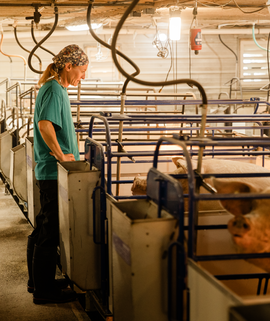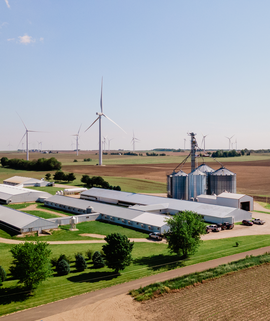

I have been lending in the swine industry for almost 27 years and this past year has been the most difficult to navigate. By mid-April, we saw profits return, giving producers the opportunity to rebuild working capital and allowing lenders to breathe easier after an extended downturn.
People outside of agriculture often ask why farmers continue production levels when they are losing money. As everyone involved in this industry understands, production decisions are made well in advance of hogs heading to market. We have faced significant challenges in reducing the sow herd while boosting exports to drive profitability back into the industry.
Now that profitability has returned, it is not time to become complacent. Over the past 20 months, producers have foregone most, if not all, maintenance. Sow parity has increased and working capital has been depleted. What should you target to fix first? Hopefully, most operations took advantage of the $100+ cwt. prices available this summer, giving them some level of higher returns to rebuild working capital. The next question is: Where do I deploy that working capital first?


The first place to look is the obvious. If you don’t have at least $600 per sow in working capital, that is the bare minimum you need to reach and maintain for a long-term viable business. Once you have rebuilt the farm’s working capital, look at short-term payback investments such as improving your sow herd’s parity structure, and then move on to long-term investments, including capital improvements to existing facilities.
Another area to analyze closely is your true cost of production. With feed costs pulling back substantially over the past few months, there has been an immediate impact on earnings. However, non-feed costs have remained high and need to be adjusted in your budgeting tool when making marketing decisions.
Since pre-COVID, non-feed costs have ranged from $20-25 per head, covering increased expenses such as insurance, labor, utilities and maintenance. Based on an average loss of $21 per head in 2023, your increased interest expense will be $2-3 per head on just your operating line. If you had to restructure some debt on fixed assets over the past 12-24 months to provide working capital during the last downturn, that will only increase your interest costs. I encourage everyone to analyze their operation or engage with a consultant to understand their true cost of production.
Analyze Profitability & Owner Equity
Compeer Financial regularly conducts quarterly financial analyses on producers in our portfolio, relying on audited statements or high-confidence review quality statements. Due to audits, it typically takes longer to see year-end information. We now have year-end 2023 information back and it confirms that the industry is still grappling with severe financial stress.
As of December 31, 2023, year-end numbers reveal that the average producer incurred an operational loss of $25.76 per head on operations before making risk management decisions. Hedge activities provided a glimmer of hope, contributing an average gain of $4.79 cwt., for a net loss of $15.59 per head for 2023. What I didn’t consider are the profits farms made by growing their own feed. This would offset some of the losses if you were able to grow all your corn needs for your operation.
The impact on the balance sheet has been substantial, with declines in both farm working capital and owner’s equity since the start of the year. A key indicator for assessing the long-term viability of operations is working capital, with a standard benchmark of $600 per sow or sow equivalents. At the beginning of 2023, the average working capital per sow stood at an impressive $1,138, nearly double the required amount. However, this figure declined by $194 per sow in the first three quarters of 2023.


In summary, know you cost of production, be ready to execute a marketing plan when you have the opportunity and rebuild your farm’s working capital levels to withstand adversity in the future. Each downturn seems to exceed the last, so it is vital for your business to rebuild working capital that allows your operation to not just survive, but thrive in the future.




